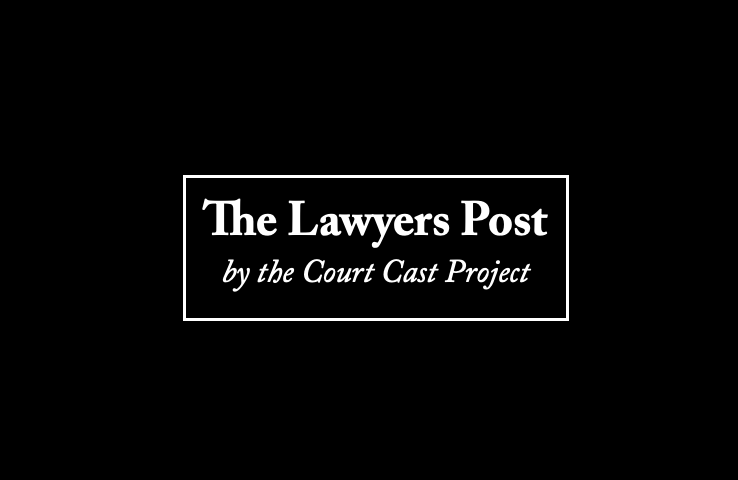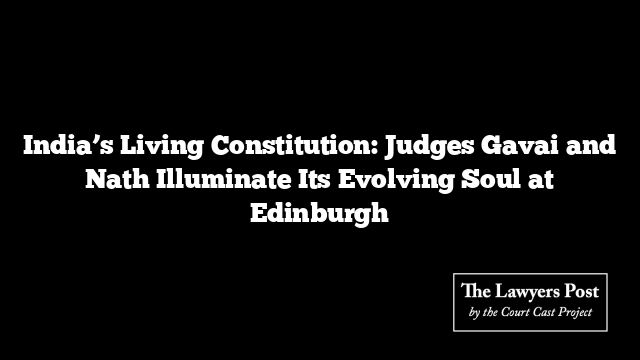At the venerable halls of the University of Edinburgh School of Law, two of India’s highest judicial voices offered a powerful reminder: the Constitution is not a fossilized manuscript but a breathing, evolving pact between generations.
Chief Justice of India B.R. Gavai and Supreme Court Judge Vikram Nath were not there to deliver rote lectures. They came to converse—about rights, reforms, and the restless spirit of a document meant to grow with its people.
Justice Gavai: ‘We cannot bind the unborn’
Ditching a prepared speech, Chief Justice Gavai opened with candor: “Though I have prepared a speech, I would not read them and like to interact with you.”
What followed was a journey—through time, philosophy, and landmark rulings that have redrawn the contours of the Constitution. Justice Gavai invoked Dr. B.R. Ambedkar’s prophetic words from 1949: “We can’t bind the future generations… they should have an opportunity to amend the Constitution to adapt to the societal and economic changes.”
That philosophy, he argued, is the reason India’s constitutional architecture has withstood the test of political upheaval, economic shifts, and generational change.
Referencing pivotal cases—Shankari Prasad, Sajjan Singh, Golak Nath, and the seminal Kesavananda Bharati—Justice Gavai underlined how the judiciary and Parliament have acted as co-authors in this evolving manuscript.
He spotlighted amendments that were nothing short of tectonic shifts:
-
1951: The First Amendment—enabling affirmative action, curbing Article 19 misuse.
-
42nd & 44th: The Emergency era’s twin legacies—power concentrated, then rebalanced.
-
73rd & 74th: The grassroots revolution—empowering panchayats and municipalities.
-
86th: Education reimagined as a fundamental right.
-
93rd & 103rd: Reservation moved into private institutions and economic backwardness acknowledged.
-
106th: A long-awaited promise—one-third reservation for women in legislatures, poised for rollout.
“In 75 years,” he concluded, “Parliament has risen to challenges through timely amendments. The Constitution lives because it listens—to the people, to the moment, and to the moral arc of justice.”
Justice Vikram Nath: ‘Rights give the state its legitimacy’
If Gavai sketched the living structure, Justice Vikram Nath explored its soul—the individual.
In a lecture titled “The Role of the Constitution in Protecting Individual Rights”, Justice Nath reflected on the moral backbone of constitutionalism. He drew a striking parallel between Britain’s unwritten constitution and India’s written one—yet, he argued, both derive their power from adaptability and an unrelenting commitment to rights.
At the heart of India’s Constitution, he said, lies the Golden Triangle: Articles 14, 19, and 21—equality, freedom, and life. These are not isolated pillars but an interconnected trinity.
Quoting the transformative Maneka Gandhi judgment, Justice Nath highlighted how Article 21 evolved to encompass “the right to live with dignity”. The judiciary’s willingness to broaden civil liberties, he said, is rooted in the Constitution’s inherent flexibility and the courage of its interpreters.
He invoked landmark cases—Sheela Barse (prisoner rights), NALSA (gender identity), and the doctrine of emanation, where rights radiate from the core text even if not explicitly written.
His summation was poetic: “The Constitution is a beautiful mosaic of individual and social rights. It strives to protect and work in the best interest of its citizens every day so as to create a nation where each individual has ample safeguards.”
Beyond the Podium: Dialogue on the Law’s Future
The event closed with an animated discussion moderated by Dr. Devail Desai, where both judges engaged questions on legal education reform, AI’s role in justice, gender representation in the judiciary, and reflections on their legal journeys. Tanvi Dubey, Advocate-on-Record at the Supreme Court, offered closing remarks, weaving the threads of the evening into a fitting tribute to a Constitution that refuses to stand still.
At Edinburgh, the Constitution was not read out—it was brought to life.




